Table of Contents
Come join us now, and enjoy playing your beloved music and browse through great scores of every level and styles!
Can’t find the songbook you’re looking for? Please, email us at: sheetmusiclibrarypdf@gmail.com We’d like to help you!
Carousel Waltz — from the Musical Carousel by Richard Rodgers (Piano Solo sheet music, Noten)

Carousel is the second musical from the team of Richard Rodgers (music) and Oscar Hammerstein II (book and lyrics). The 1945 work was adapted from Ferenc Molnár’s 1909 play Liliom, which transplanted its Budapest setting to the Maine coast.
Best Sheet Music download from our Library.
It is a love story between Billy Bigelow, the worker of a horse attraction and a miller, Julie Jordan, which puts their jobs in danger. In order to help Julie and her unborn child, he tries to pull off a robbery, which goes wrong. Despite everything, he is given the opportunity to do things right.
A secondary plot line deals with mill worker Carrie Pipperidge and her romance with ambitious fisherman Enoch Snow. The show includes the well-known songs ‘If I Loved You’, ‘June Is Bustin’ Out All Over’ and ‘Never Walk Alone’. Richard Rodgers later wrote that Carousel was his favorite of all his musicals.
After the spectacular success of Rodgers and Hammerstein’s early musicals, Oklahoma! (1943), the pair sought to collaborate on another piece, knowing that any resulting work would be compared to Oklahoma!, most likely unfavorably. Initially they were reluctant to seek the rights to Liliom; Molnár had refused permission to adapt the play in the past, and the original ending was considered depressing for musical theater.
Please, subscribe to our Library.
If you are already a subscriber, please, check our NEW SCORES’ page every month for new sheet music. THANK YOU!
After acquiring the rights, the team created a work with long music sequences and made the ending more hopeful.
The musical required considerable modification during out-of-town tryouts, but once it opened on Broadway on April 19, 1945, it was an immediate hit with critics and audiences. Carousel initially ran for around 890 performances and doubled its success in the West End in 1950. Although it has never achieved as much commercial success as Oklahoma!, the play has been repeated and recorded several times.
A production by Nicholas Hytner was successful in 1992 in London, in 1994 in New York and on tour. In 1999, Time magazine named Carousel the best musical of the 20th century.
Rodgers designed Carousel to be an almost continuous stream of music, especially in Act 1. In later years, Rodgers was asked if he had considered writing an opera. He stated that he had been sorely tempted to, but saw Carousel in operatic terms. He remembered, “We came very close to opera in the Majestic Theatre. … There’s much that is operatic in the music.”
| Artist or Composer / Score name | Cover | List of Contents |
|---|---|---|
| An Introduction To Bach Studies (eBook) |
 |
|
| An Irish Blessing (Musescore File).mscz | ||
| An Irish Blessing (SATB) Choral | An Irish Blessing (SATB) | |
| Anais Mitchell Hadestown (The Broadway Musical) Piano Vocal Selections |
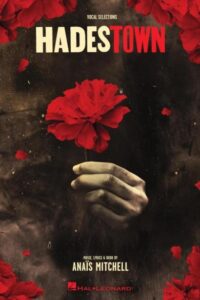 |
Anais Mitchell Hadestown (The Broadway Musical) Piano Vocal Selections |
| Analisis musical claves para entender e interpretar la Música (M. y A. Lorenzo) Español |
 |
|
| Analysis Of Tonal Music An Schenkerian Approach Allen Cadwallader and David Gagné (Book) |
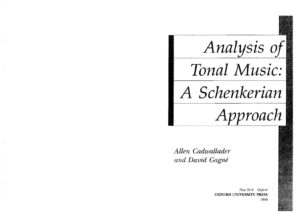 |
|
| Analyzing Bach Cantatas by Eric Chafe (eBook) |
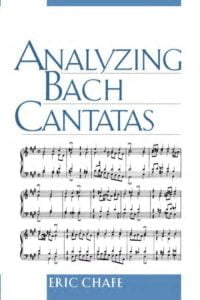 |
|
| Analyzing Schubert by Suzannah Clark (Cambridge Un. Press) (eBook) |
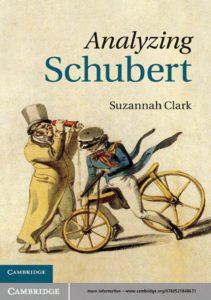 |
|
| Analyzing The Music Of Living Composers (And Others) |
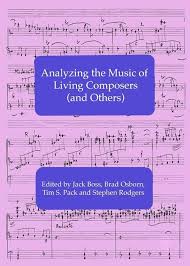 |
|
| Analyzing The Music Of Living Composers And Others (Book) by Jack Boss, Brad Osborn, Tim S. Pack |
 |
|
| Anastacia Not That Kind Songbook |
 |
Anastacia songbook |
| Anastasia Once Upon A December arr. by John Brimhall (Piano Solo 2 Versions Easy And Intermediate) |
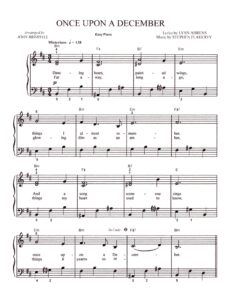 |
|
| Anastasia Sheet Music songbook Piano & vocal |
 |
Anastasia Sheet Music songbook Piano & vocal |
| Anastasia The New Broadway Musical |
 |
Anastasia The New Broadway Musical Stephen Flaherty Lynn Ahrens |
| Anatomy of a lick Essential Jazz lines by Matt Warnock Guitar (All Complete 5 Volumes 1 to 5) |
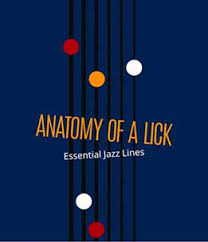 |
Anatomy of a lick Essential Jazz lines by Matt Warnock Guitar Contents |
| Ancora ancora ancora (Mina) | ||
| Ancora qui (Django Unchained) Elisa – Ennio Morricone | ||
| And the Waltz goes on (Anthony Hopkins) | ||
| Andante (from String Quartet op. 22) P. I. Tchaikovsky | ||
| Anderson Freire – So Voce Piano |
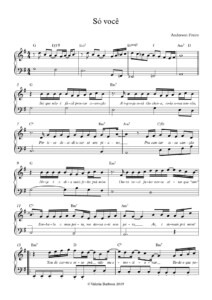 |
|
| Andras Schiff – Music Comes Out Of Silence Book |
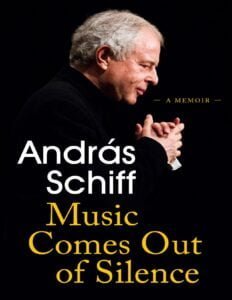 |
|
| Andre Gagnon – Le Reve De L’automne (sheet music Collection) |
 |
Andre Gagnon – Le Reve De L’automne (sheet music Collection) |
| Andre Gagnon – Les Jours Tranquilles | Andre Gagnon – Les Jours Tranquilles | |
| Andre Gagnon – Meguriai |
 |
|
| Andre Gagnon – Nelligan |
 |
|
| Andre Gagnon – Petite Nostalgie |
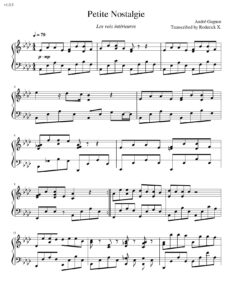 |
|
| Andre Gagnon – Reves D’Automne | Andre Gagnon – Reves D’Automne | |
| Andre Gagnon – The Very Best Of Andre Gagnon (Sheet Music Songbook) |
 |
Andre Gagnon – The Very Best Of Andre Gagnon (Sheet Music Songbook) |
| Andre Gagnon Ciel D’Hiver |
 |
|
| Andre Gagnon Entre Le Boeuf et l’Ane Gris Musique Traditionelle |
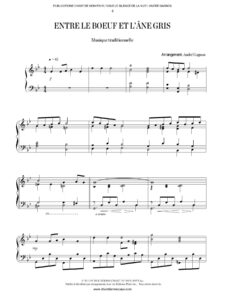 |
|
| André Gagnon L’air Du Soir |
 |
|
| Andre Gagnon Neiges |
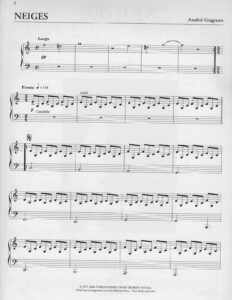 |
|
| André Gagnon Nelligan |
 |
|
| André Gagnon Origami |
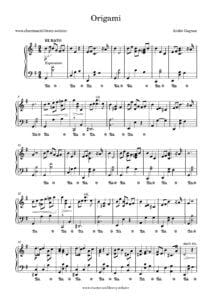 |
|
| Andre Gagnon Pensées Fugitives |
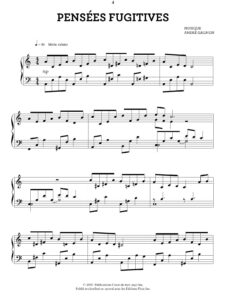 |
|
| André Gagnon Piano Solitude |
 |
Gagnon, André Piano Solitude |
| Andre Gagnon Prologue |
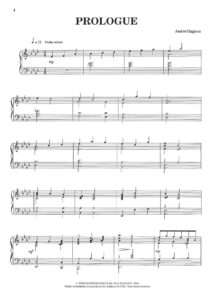 |
|
| André Gagnon Selection Speciale de chansons (partitions musicales) |
 |
André Gagnon Selection Speciale de chansons (partitions musicales) |
| André Gagnon Un Piano Sur La Mer (Piano Solo Partition Sheet Music) | Gagnon André Un Piano Sur La Mer (Piano Solo Partition Sheet Music) | |
| Andre Popp Paul Mauriat Love Is Blue Piano Solo Arr. |
 |
|
| André Previn – Play Like André Previn no. 1 |
 |
Andre Previn sheet music |
| Andre Previn – The Genius of (Piano Solos sheet music) |
 |
The genius of André Previn |
| Andre Rieu La Vie Est Belle (Songbook Collection As Performed By André Rieu) |
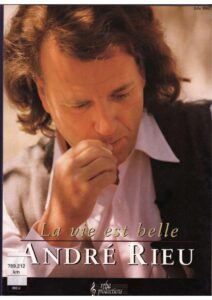 |
Andre Rieu La Vie Est Belle (Songbook Collection As Performed By André Rieu) |
| Andrea Bocceli – Time To Say Goodbye | ||
| Andrea Boccelli – Time To Say Goodbye |
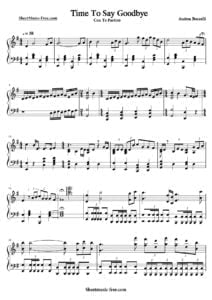 |
|
| Andrea Bocelli Romanza songbook (Guitar & Voice) |
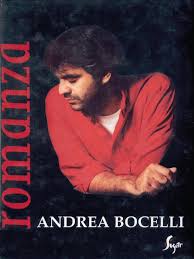 |
Andrea Bocelli Romanza songbook |
| Andrea Bocelli – Anthology (songbook) |
 |
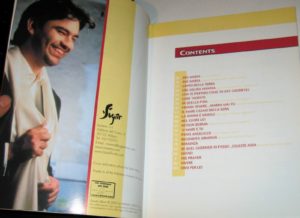 |
| Andrea Bocelli – Con te partiro (Time to say Goodbye) Piano Solo arr | Andrea Bocelli – Con te partiro (Time to say Goodbye) Piano Solo | |
| Andrea Bocelli – Con te partiro (Time to say Goodbye) Piano Solo.mscz | ||
| Andrea Bocelli – The Best Of Songbook |
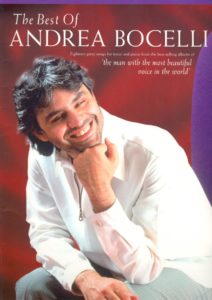 |
Andrea Bocelli best of |
| Andrea Bocelli Celine Dion The Prayer Easy Piano And Vocal By David Foster, Carole Bayer Sager, Alberto Testa And Tony Renis |
 |
|
| Andrea Bocelli Celine Dion – The Prayer – Easy Piano and Vocal by David Foster, Carole Bayer Sager, Alberto Testa and Tony Renis.mscz | ||
| Andrea Bocelli Cieli Di Toscana (Piano, guitar & Vocal) |
 |
Andrea Bocelli Cieli Di Toscana |
| Andrea Bocelli Cinema Vocal Piano |
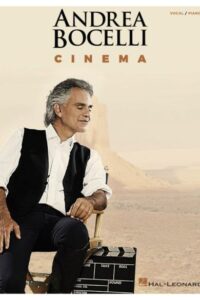 |
Andrea Bocelli Cinema Vocal Piano |
| Andrea Bocelli Si Piano Vocal Guitar |
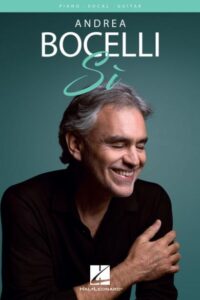 |
Andrea Bocelli Si Piano Vocal Guitar |
| Andrea Bocelli Sogno Songbook |
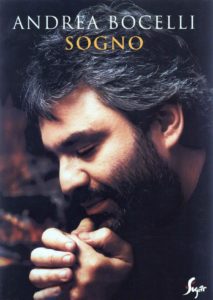 |
Andrea Bocelli sogno |
| Andrea Bocelli The Best Of Andrea Bocelli Vivere Vocal Piano |
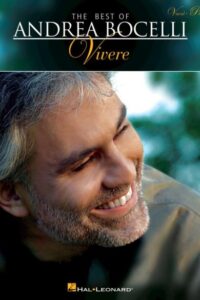 |
Andrea Bocelli The Best Of Andrea Bocelli Vivere Vocal Piano |
| Andrea Bocelli The Best Of Piano Vocal |
 |
Andrea Bocelli The Best Of Piano Vocal |
| Andrea Bocelli The Prayer |
 |
|
| Andrea Morricone – Nuovo Cinema Paradiso – Love Theme |
|
|
| Andrea Vanzo Autumn Intro |
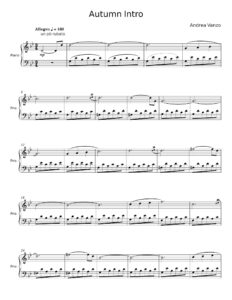 |
|
| Andrea Vanzo Intimacy | Andrea Vanzo Intimacy | |
| Andrea Vanzo Les Madeleines |
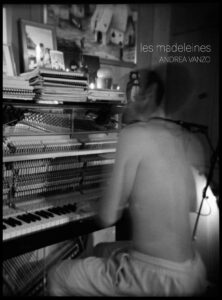 |
|
| Andrea Vanzo Song Of Storms From The Legend Of Zelda Ocarina Of Time Song Of Storms | Andrea Vanzo Song Of Storms From The Legend Of Zelda Ocarina Of Time Song Of Storms | |
| Andrea Vanzo Spring |
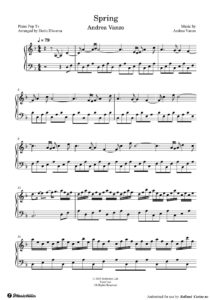 |
|
| Andrea Vanzo Valzer D’inverno | Andrea Vanzo Valzer D’inverno | |
| Andrea Vanzo Valzer d’Inverno |
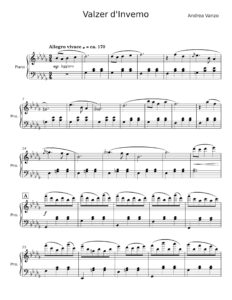 |
|
| Andrés Segovia Classic Album For Guitar Volume 2 |
 |
Andrés Segovia Classic Album For Guitar Volume 2 |
| Andrés Segovia Classic Album For Guitar Volumes 1 to14 |
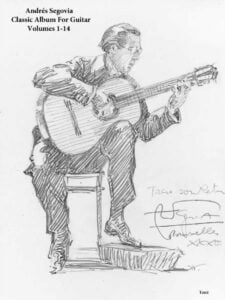 |
Andrés Segovia Classic Album For Guitar Volumes 1 to14Andrés Segovia Classic Album For Guitar Volume 2 |
| Andres Segovia Collection Pieces For Solo Guitar |
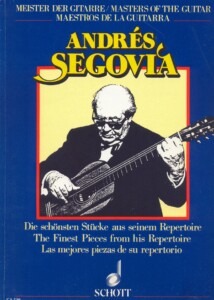 |
Andres Segovia Collection Pieces For Solo Guitar |
| Andres Segovia Obras Para Guitarra Vol 1 Preludios Y Estudios |
 |
Andres Segovia Obras Para Guitarra Vol 1 Preludios Y Estudios |
| Andres Segovia Obras Para Guitarra Vol 2 23 Canciones Populares Del Mundo |
 |
Andres Segovia Obras Para Guitarra Vol 2 23 Canciones Populares Del Mundo |
| Andres Segovia- Transcripciones Obras Para Guitarra Vol 3 |
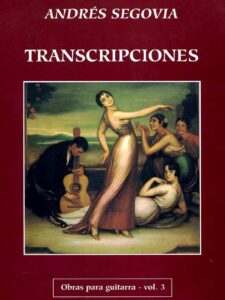 |
Andres Segovia- Transcripciones Obras Para Guitarra Vol 3 |
| Andrew Gordon The Blues Play A Long and Solos Collection for Guitar Beginner Series |
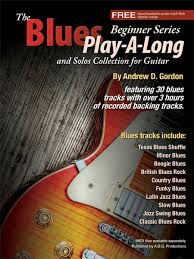 |
|
| Andrew Green Jazz Guitar Technique |
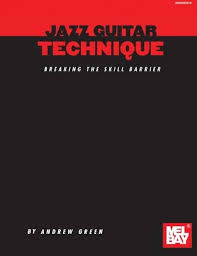 |
|
| Andrew Hill 21 Piano Compositions |
 |
Andrew Hill 21 Piano Compositions |
| Andrew Lloyd Webber – All I Ask of You (The Phantom of the Opera) |
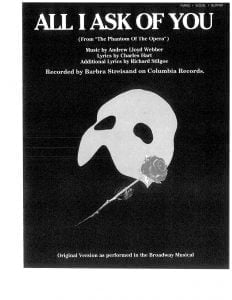 |
|
| Andrew Lloyd Webber – Angel Of Music (Piano, Vocal, Guitar chords) | Andrew Lloyd Webber – Angel Of Music (Piano, Vocal, Guitar chords) | |
| Andrew Lloyd Webber – CATS (Piano & Vocal score) |
 |
Andrew Lloyd Webber – CATS (Piano & Vocal score) |
| Andrew Lloyd Webber – Jesus Christ Superstar (Musical Excerpts Complete Libretto) Lyrics by Tim Rice |
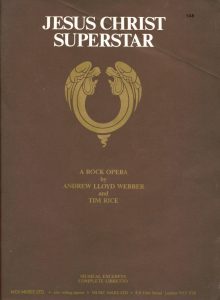 |
 |
| Andrew Lloyd Webber – Joseph And The Amazing Technicolor Dreamcoat The Musical Full Score |
 |
|
| Andrew Lloyd Webber – Joseph And The Amazing Technicolor Dreamcoat The Musical Vocal Selections |
 |
Andrew Lloyd Webber – Joseph And The Amazing Technicolor Dreamcoat The Musical Vocal Selections |
| Andrew Lloyd Webber – Love Never Dies (Piano Book) |
 |
Andrew Lloyd Weber – Love Never Dies (Piano Book) |
| Andrew Lloyd Webber – Love Never Dies Full Vocal Score (Andrew Lloyd Webber) |
 |
Love Never Dies Full Vocal Score |
| Andrew Lloyd Webber – Memory (from CATS) Piano Vocal with lyrics |
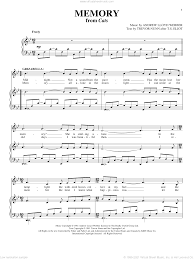 |
|
| Andrew Lloyd Webber – Requiem (the musical) Piano Vocal Score |
 |
|
| Andrew Lloyd Webber – School of Rock |
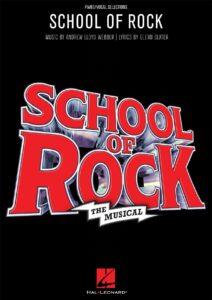 |
Andrew Lloyd Webber – School of Rock |
| Andrew Lloyd Webber – The Phantom Of The Opera | ||
| Andrew Lloyd Webber – Unmasked A Memoir (Book) |
 |
|
| Andrew Lloyd Webber – Unmasked The Platinum Collection (Musicals) Deluxe Edition |
 |
Andrew Lloyd Webber – Unmasked The Platinum Collection |
| Andrew Lloyd Webber “By Jeeves”, the musical |
 |
|
| Andrew Lloyd Webber And Glenn Slater Til I Hear You Sing From Love Never Dies | Andrew Lloyd Webber And Glenn Slater Til I Hear You Sing From Love Never Dies | |
| Andrew Lloyd Webber Another Suitcase In Another Hall from Evita | Andrew Lloyd Webber Another Suitcase In Another Hall from Evita | |
| Andrew Lloyd Webber Anthology |
 |
Webber, Andrew Lloyd – Antholog |
| Andrew Lloyd Webber Cats Vocal Score Piano Reduction |
 |
Andrew Lloyd Webber Cats Vocal Score Piano Reduction |
| Andrew Lloyd Webber Evita Andrew Lloyd Webber and Tim Rice Piano Vocal Guitar chords Selections from the OST |
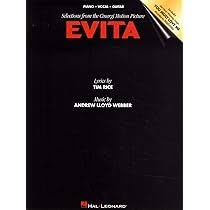 |
Andrew Lloyd Webber Evita Andrew Lloyd Webber and Tim Rice Piano Vocal Guitar chords Selections from the OST |
| Andrew Lloyd Webber For Piano Piano Solos The Musicals |
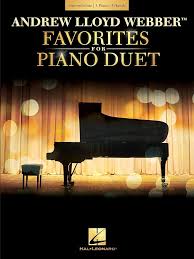 |
Andrew Lloyd Webber Musical Favorites For Piano Duet Early Intermediate Level |
| Andrew Lloyd Webber Jesus Christ Superstar (Broadway) (Musical) |
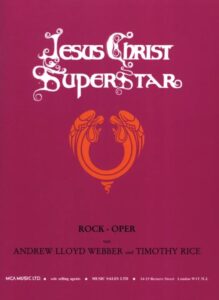 |
Andrew Lloyd Webber Jesus Christ Superstar (Broadway) |
| Andrew Lloyd Webber Jesus Christ Superstar Tim Rice (Deutsche Texte) | Andrew Lloyd Webber Jesus Christ Superstar Tim Rice (Deutsche Texte) | |
| Andrew Lloyd Webber Masquerade from The Phantom of the Opera for Guitar TABS | Andrew Lloyd Webber Masquerade from The Phantom of the Opera for Guitar TABS | |
| Andrew Lloyd Webber Memory (from Cats the Musical) for Guitar TABS | Andrew Lloyd Webber Memory (from Cats) for Guitar TABS | |
| Andrew Lloyd Webber Musical Favorites For Piano Duet Early Intermediate Level |
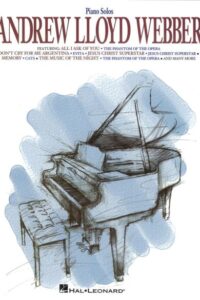 |
Andrew Lloyd Webber Musical Favorites For Piano Duet Early Intermediate Level |
| Andrew lloyd Webber Pie Jesu Piano Solo from the musical REQUIEM |
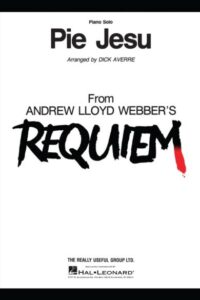 |
|
| Andrew Lloyd Webber Pro Vocal Womens Edition (Musicals) |
 |
Andrew Lloyd Webber Pro Vocal Womens Edition |
| Andrew Lloyd Webber Sheet Music Collection, The – Andrew Lloyd Webber (Musicals) |
 |
Andrew Lloyd Webber Sheet Music Collection, The – Andrew Lloyd Webber sheet music |
| Andrew Lloyd Webber Solos Arr Phillip Keveren The Phillip Keveren Series Piano Solo (Musicals) |
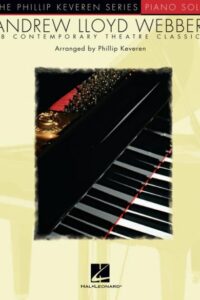 |
Andrew Lloyd Webber Solos Arr Phillip Keveren The Phillip Keveren Series Piano Solo |
| Andrew Lloyd Webber Starlight Express (Musicals) |
 |
Starlight Express – Andrew Lloyd Webber Starlight Express |
| Andrew Lloyd Webber Sunset Boulevard (Revised Broadway Version of the Musical) Piano & Vocal Score |
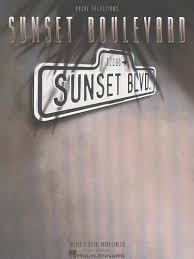 |
Andrew Lloyd Webber Sunset Boulevard (Revised Broadway Version) Piano & Vocal Score |
| Andrew Lloyd Webber Sunset Boulevard Piano Vocal Selections |
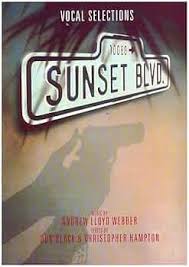 |
Andrew Lloyd Webber Sunset Boulevard Piano Vocal Selections (Contents list) |
| Andrew Lloyd Webber Super Easy Songbook Piano Vocal Guitar Chords (Musicals) |
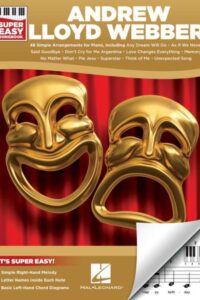 |
Andrew Lloyd Webber Super Easy Songbook Piano Vocal Guitar Chords |
| Andrew Lloyd Webber Tell Me On A Sunday Piano Vocal Guitar (The Musical) | Andrew Lloyd Webber Tell Me On A Sunday Piano Vocal Guitar | |
| Andrew Lloyd Webber The Best of Andrew Lloyd Webber Easy Piano (Musicals) |
 |
Andrew Lloyd Webber The Best of Andrew Lloyd Webber Easy Piano (Musicals) |
| Andrew Lloyd Webber The Music Of The Night |
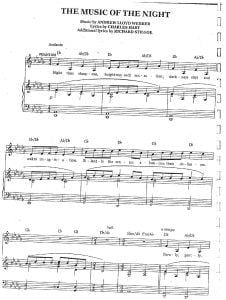 |
|
| Andrew Lloyd Webber The Phantom of the Opera for Guitar TABS (Musical) | Andrew Lloyd Webber The Phantom of the Opera for Guitar TABS | |
| Andrew Lloyd Webber The Phantom Of The Opera Movie Selections (Musical) |
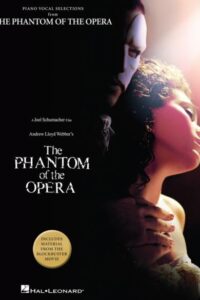 |
Andrew Lloyd Webber The Phantom Of The Opera Movie Selections |
| Andrew Lloyd Webber Think of me (The Phantom of the Opera) | Andrew Lloyd Webber Think Of Me | |
| Andrew Lloyd WebberThe Phantom of the Opera (Piano Vocal & Guitar) Songbook |
 |
 |
| Andrew York Best Guitar Solo Songbook Real Acoustic Guitar |
 |
Andrew York Best Guitar Solo Songbook Real Acoustic Guitar |
| Andrew York Guitar Works Anthology |
 |
Andrew York Guitar Works Anthology Contents (and more) |
| Andrew York Home (Guitar Contemporary Music) | Andrew York Home (Guitar Contemporary Music) | |
| Andrew York Imaginary March For Guitar | Andrew York Imaginary March For Guitar | |
| Andrew York Little One For Guitar | Andrew York Little One For Guitar | |
| Andrew York Quiccan For Four Guitars |
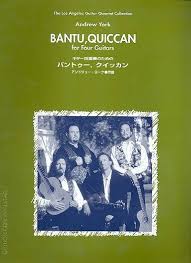 |
|
| Andrew York Three Dimensions For Solo Guitar |
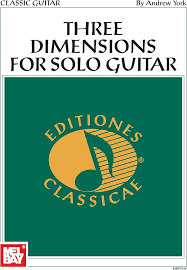 |
Andrew York Guitar Works Anthology Contents (and more) |
| Androgyne (Mario Leblanc) | ||
| Andy Timmons Anthology |
 |
|
| Andy Jaffe – Jazz Harmony |
 |
Andy Jaffe – Jazz Harmony |
| Andy Laverne – Tons Of Runs For The Contemporary Pianist |
 |
andy laverne tons of runs contemporary pianist |
| Andy LaVerne – Vol. 85 Tunes You Thought You Knew | Andy LaVerne sheet music | |
| Andy Mckee Joyland (Songbook) (Andy Mckee) Guitar TAB |
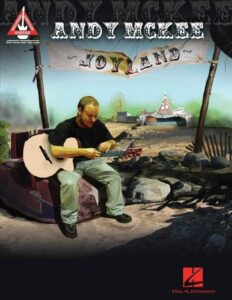 |
Andy Mckee Joyland (Songbook) (Andy Mckee) Guitar TAB |
| Angeles Negros Y Volveré (Alaian Barrière) |
 |
|
| ANGELO BADALAMENTI – (Twin peaks) – Twin Peaks theme easy piano solo | ANGELO BADALAMENTI – (Twin peaks) – Twin Peaks theme | Badalamenti Angelo – Twin Peaks |
| Angelo Badalamenti – Twin Peaks – Love Theme easy piano solo | Badalamenti, Angelo – Twin Peaks – Love Theme | Angelo Badalamenti – Twin Peaks (book) |
| Angelo Badalamenti – Twin Peaks (songbook the music of Twin Peaks) |
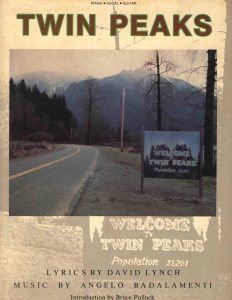 |
Angelo Badalamenti – Twin Peaks (book) |
| Angelo Badalamenti – Twin Peaks Theme (Instrumental) (Musescore File).mscz | ||
| Angelo Badalamenti Twin Peaks – Love Theme (Laura Palmer’s Theme) | Twin Peaks -Love Theme | |
| Angra Rebirth Guitar Songbook |
 |
|
| Angry Birds Theme Song (Piano) |
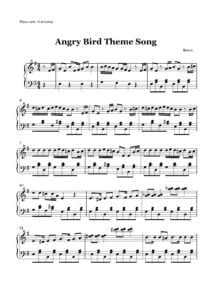 |
|
| Anido Maria Luisa Aire Norteno for Guitar Rev Gilardino |
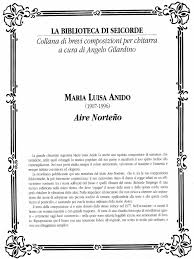 |
|
| Animal Crossing Christmas Eve |
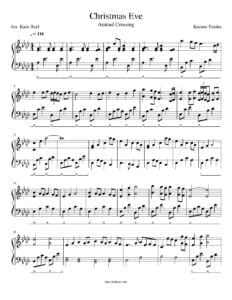 |
|
| Animal Crossing – Christmas Eve (Musescore File).mscz | ||
| Animal Crossing New Horizons – Welcome Horizons Main Theme |
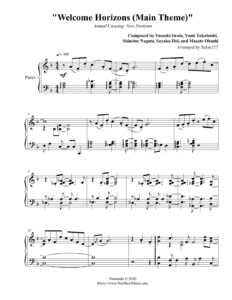 |
|
| Animation Collection, Music From The Movies The (Solo Piano) |
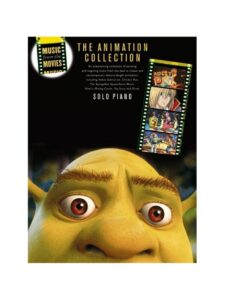 |
Animation Collection, Music From The Movies The (Solo Piano) |
| Anime Music Collection |
 |
Anime Collection |
| Anime Sheet Music Tsubasa Chronicle |
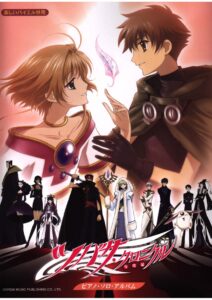 |
Anime Sheet Music Tsubasa Chronicle |
| Anna And The King – How Can I Not Love You – Enriquez Joy | ||
| Anna And The King – How Can I Not Love You – Joy Enriquez | Anna And The King – How Can I Not Love You – Enriquez Joy | |
| Anna Karenina 2012 – Curtain (Dario Marianelli) | ||
| Anna Karenina 2012 – Dance with me (Dario Marianelli) | ||
| Anna Karenina 2012 – I Understood Something (Dario Marianelli) |
Musical numbers
| Act I “The Carousel Waltz” – Orchestra “You’re a Queer One, Julie Jordan” – Carrie Pipperidge and Julie Jordan “(When I Marry) Mister Snow” – Carrie “If I Loved You” – Billy Bigelow and Julie “June Is Bustin’ Out All Over” – Nettie Fowler and Chorus “(When I Marry) Mister Snow” (reprise) – Carrie, Enoch Snow and Female Chorus “When the Children Are Asleep” – Enoch and Carrie “Blow High, Blow Low” – Jigger Craigin, Billy and Male Chorus “Soliloquy” – Billy | Act II “This Was a Real Nice Clambake” – Carrie, Nettie, Julie, Enoch and Chorus “Geraniums in the Winder” – Enoch * “There’s Nothin’ So Bad for a Woman” – Jigger and Chorus “What’s the Use of Wond’rin’?” – Julie “You’ll Never Walk Alone” – Nettie “The Highest Judge of All” – Billy Ballet: “Billy Makes a Journey” – Orchestra “If I Loved You” (reprise) – Billy Finale: “You’ll Never Walk Alone” (reprise) – Company |
Rodgers uses music in Carousel in subtle ways to differentiate characters and tell the audience of their emotional state.
In “You’re a Queer One, Julie Jordan”, the music for the placid Carrie is characterized by even eighth-note rhythms, whereas the emotionally restless Julie’s music is marked by dotted eighths and sixteenths; this rhythm will characterize her throughout the show. When Billy whistles a snatch of the song, he selects Julie’s dotted notes rather than Carrie’s.
Reflecting the close association in the music between Julie and the as-yet unborn Louise, when Billy sings in “Soliloquy” of his daughter, who “gets hungry every night”, he uses Julie’s dotted rhythms. Such rhythms also characterize Julie’s Act 2 song, “What’s the Use of Wond’rin’”.
The stable love between Enoch and Carrie is strengthened by her willingness to let Enoch not only plan his entire life, but hers as well. This is reflected in “When the Children Are Asleep”, where the two sing in close harmony, but Enoch musically interrupts his intended’s turn at the chorus with the words “Dreams that won’t be interrupted”.
Rodgers biographer Geoffrey Block, in his book on the Broadway musical, points out that though Billy may strike his wife, he allows her musical themes to become a part of him and never interrupts her music.
Block suggests that, as reprehensible as Billy may be for his actions, Enoch requiring Carrie to act as “the little woman”, and his having nine children with her (more than she had found acceptable in “When the Children are Asleep”) can be considered to be even more abusive.
The twelve-minute “bench scene”, in which Billy and Julie get to know each other and which culminates with “If I Loved You”, according to Hischak, “is considered the most completely integrated piece of music-drama in the American musical theater”.
The scene is almost entirely drawn from Molnár and is one extended musical piece; Stephen Sondheim described it as “probably the single most important moment in the revolution of contemporary musicals”. “If I Loved You” has been recorded many times, by such diverse artists as Frank Sinatra, Barbra Streisand, Sammy Davis Jr., Mario Lanza and Chad and Jeremy.
The D-flat major theme that dominates the music for the second act ballet seems like a new melody to many audience members. It is, however, a greatly expanded development of a theme heard during “Soliloquy” at the line “I guess he’ll call me ‘The old man’ “.
When the pair discussed the song that would become “Soliloquy”, Rodgers improvised at the piano to give Hammerstein an idea of how he envisioned the song. When Hammerstein presented his collaborator with the lyrics after two weeks of work (Hammerstein always wrote the words first, then Rodgers would write the melodies), Rodgers wrote the music for the eight-minute song in two hours.
“What’s the Use of Wond’rin’ “, one of Julie’s songs, worked well in the show but was never as popular on the radio or for recording, and Hammerstein believed that the lack of popularity was because he had concluded the final line, “And all the rest is talk” with a hard consonant, which does not allow the singer a vocal climax.
Irving Berlin later stated that “You’ll Never Walk Alone” had the same sort of effect on him as the 23rd Psalm. When singer Mel Tormé told Rodgers that “You’ll Never Walk Alone” had made him cry, Rodgers nodded impatiently. “You’re supposed to.” The frequently recorded song has become a widely accepted hymn.
The cast recording of Carousel proved popular in Liverpool, like many Broadway albums, and in 1963, the Brian Epstein-managed band, Gerry and the Pacemakers had a number-one hit with the song. At the time, the top ten hits were played before Liverpool F.C. home matches; even after “You’ll Never Walk Alone” dropped out of the top ten, fans continued to sing it, and it has become closely associated with the soccer team and the city of Liverpool.
A BBC program, Soul Music, ranked it alongside “Silent Night” and “Abide With Me” in terms of its emotional impact and iconic status.
Browse in the Library:
Or browse in the categories menus & download the Library Catalog PDF:
